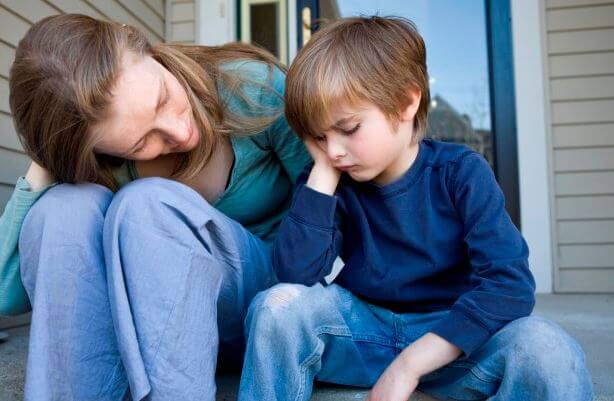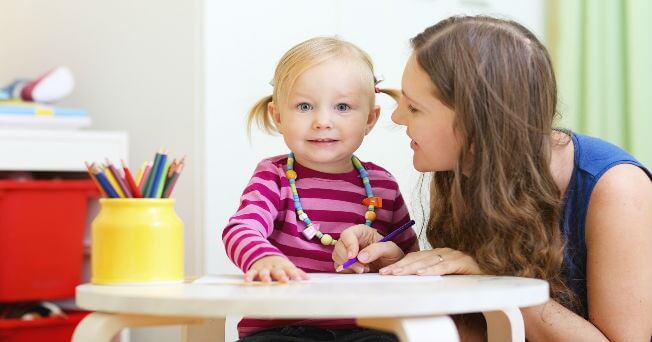How to Teach Children to Reason


Reviewed and approved by the psychologist María Alejandra Castro Arbeláez
How can you teach children to reason? Should you teach children to reason? And what does it even mean to reason?
If you have ever asked yourself these questions, we invite you to keep reading, as we’ll provide the answers below.
What does it mean to reason?
Reasoning is the human capacity to solve the problems that we are facing. Thanks to our ability to reason, we can assimilate the knowledge we obtain in order to help us understand the world.
Reasoning means internalizing, learning, interpreting and coming to conclusions regarding any event, and then using it for daily life. It is a mental process that keeps us from operating solely on instinct. It gives us the ability to rationalize and to analyze any situation that calls for it.
Is it necessary to teach children to reason?

Yes, teaching your child to reason is necessary. From the time your child is young, you must teach him how to behave and how to respond to the stimuli he receives.
Your child needs to know how to behave and communicate well at home, at daycare, at school, at the park, or any place he finds himself.
If we teach our children well, the stimuli they receive will make them use their ability to reason. Based on personal experience, they will formulate opinions and decide what to do and/or draw conclusions about any occurrence.
How can you teach children to reason?
In order to teach children to reason, you shouldn’t shield them from life’s frustrations or protect them from every challenge.
If you always give your children what they want, you will only be teaching them one thing: When I want something, then I just need to throw a fit.
Teaching a baby to reason
If you want to teach a crawler to reason, then stop removing every obstacle from her path (cardboard boxes, for example). In fact, you can help your child by actually placing some obstacles around her. That way, she will learn to crawl around them and go on her way.
During this same stage, you can also teach your child to reason if you place toys on chairs where she can see them. At first, your child will observe the toys from the floor. Soon she will begin to think of how to grab them.
If the chair in question is sitting on a rug, don’t be surprised if your child suddenly tugs on the rug to make the toy fall to the floor. In the same way, don’t be surprised if at some point your child grabs onto the chair and tries to stand up in order to reach her treasure.
Teaching a one-year-0ld to reason
As your little one grows up, the stimulation you provide to help him reason should be greater. Once your child is already a year old, you can provide him with different “challenges” to motivate him to surpass himself and reach his goals.
Let’s say you decide to give your child a gift. Place the gift inside a plastic container with a lid. Give the present to your child and observe his reaction. More than likely, he will gesture for you to open the container. Rather than doing it for him, try to get your child to open it himself.
Allow your child to experiment. Let him bang the container against the floor, against another toy, and then against the floor again. While he’s at it, the lid might come loose. Your child can then stick his hand in and take out his new toy.
If so, great! Your child will have learned that banging something against the floor is one possible way to break something and, in this case, open it.
But if your child is unsuccessful, don’t worry. Maybe it’s time to teach him another useful and very important motor skill that he will need in the future. You can teach him how to twist off a top.
Spend some time showing your child how to twist off the top of a container in order to get to a favorite toy or snack.
Teaching a toddler how to reason

Once your child has reached the age of 2, she is capable of learning so much more. As a mom, you can encourage this learning.
At this point, your child is beginning to learn manners and how to behave the way her family expects. For example, she is learning not to write on the walls, not to rip pages out of books, how to eat with silverware, and not to wipe her dirty hands on her clothing…
As your child digests these new lessons and puts them to the test, you will be there to correct her. Remember, there’s not a child on the planet capable of following every rule to a T.
But you can help your child reason regarding why her behavior is incorrect. Of course, you will have to dedicate time to explaining the reasons. But it’s the only way that your child will be able to internalize what you tell her. And in the end, she will learn to reason.
All cited sources were thoroughly reviewed by our team to ensure their quality, reliability, currency, and validity. The bibliography of this article was considered reliable and of academic or scientific accuracy.
- Sternberg, R. J., & Spear-Swerling, L. (1999). Enseñar a pensar. Santillana.
- Sansone, B. P. (2015). La hora del cuento: enseñar a razonar a los niños a través de la lectura de cuentos (Vol. 10). Ediciones de la Torre.
- Tueros, L. F. A. (2009). Evolución del razonamiento analógico en niños: seguimiento desde los seis hasta los once años de edad. Avances en Psicología Latinoamericana, 27(1), 97-110. https://revistas.urosario.edu.co/index.php/apl/article/view/35
- García, F., Colom, R., Lora, S., Rivas, M., & Traver, V. (2000). Valoración de «Filosofía para Niños»: un programa de enseñar a pensar. Psicothema, 12(2), 207-211. https://www.redalyc.org/pdf/727/72712208.pdf
This text is provided for informational purposes only and does not replace consultation with a professional. If in doubt, consult your specialist.








